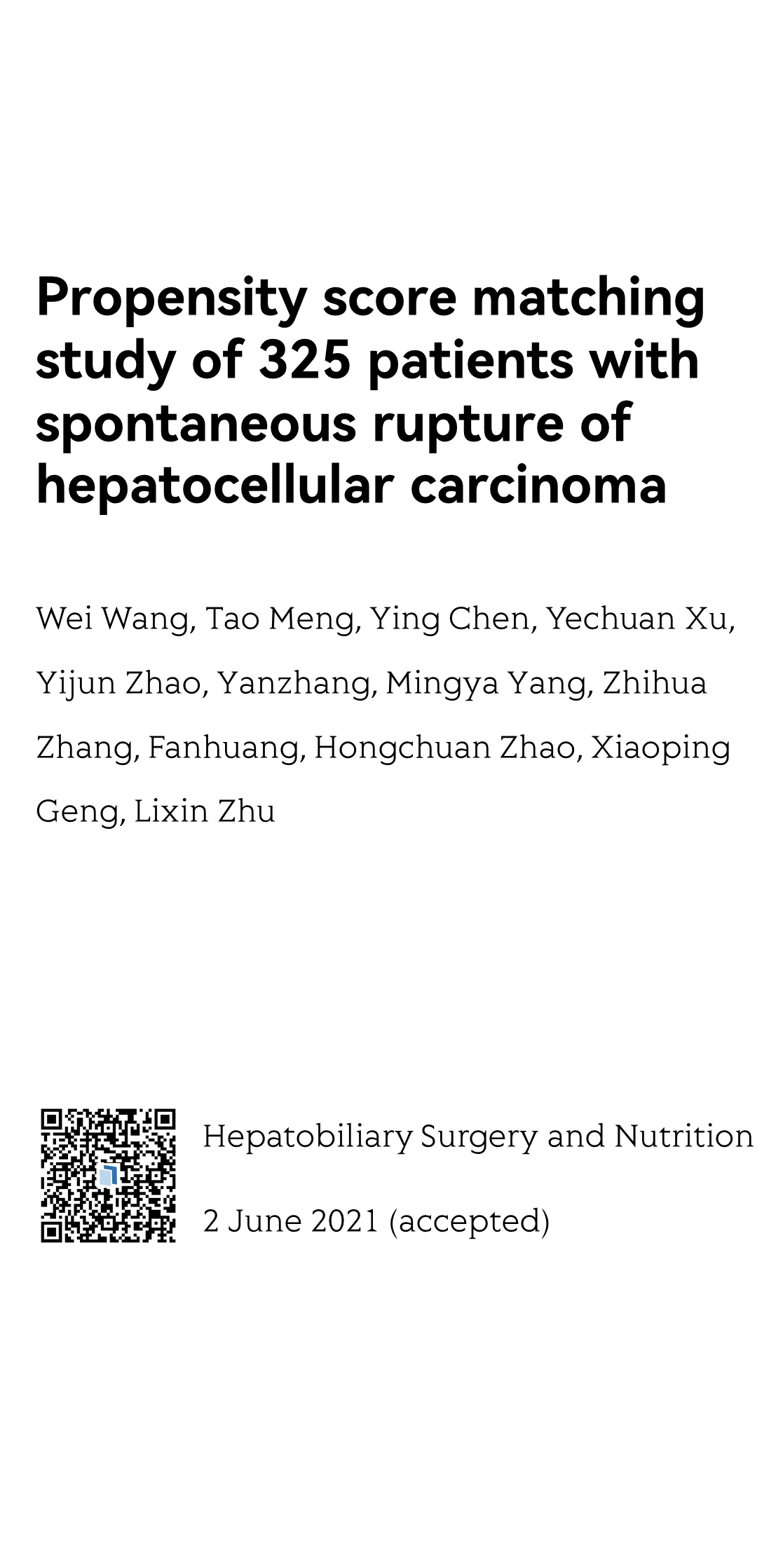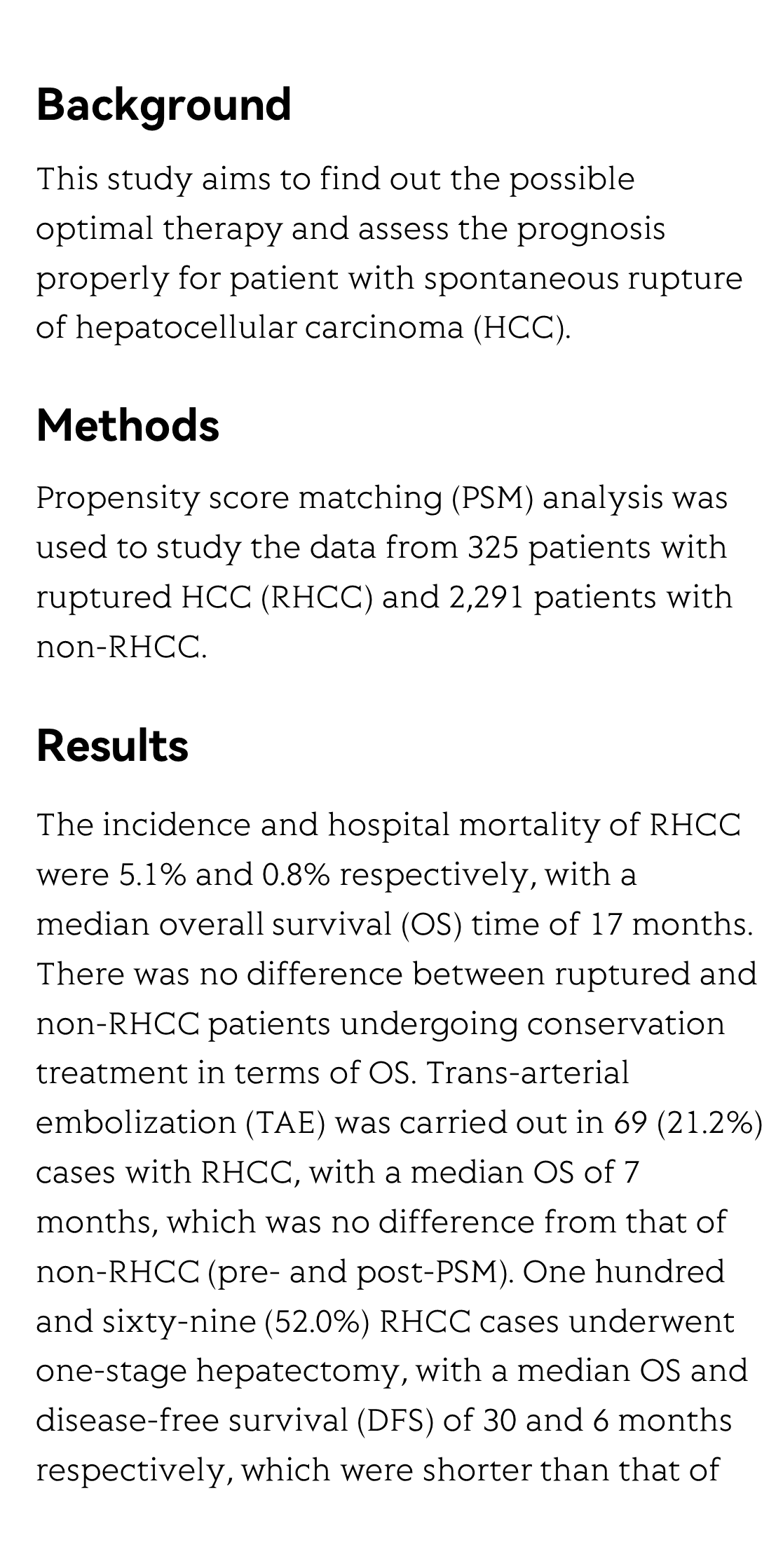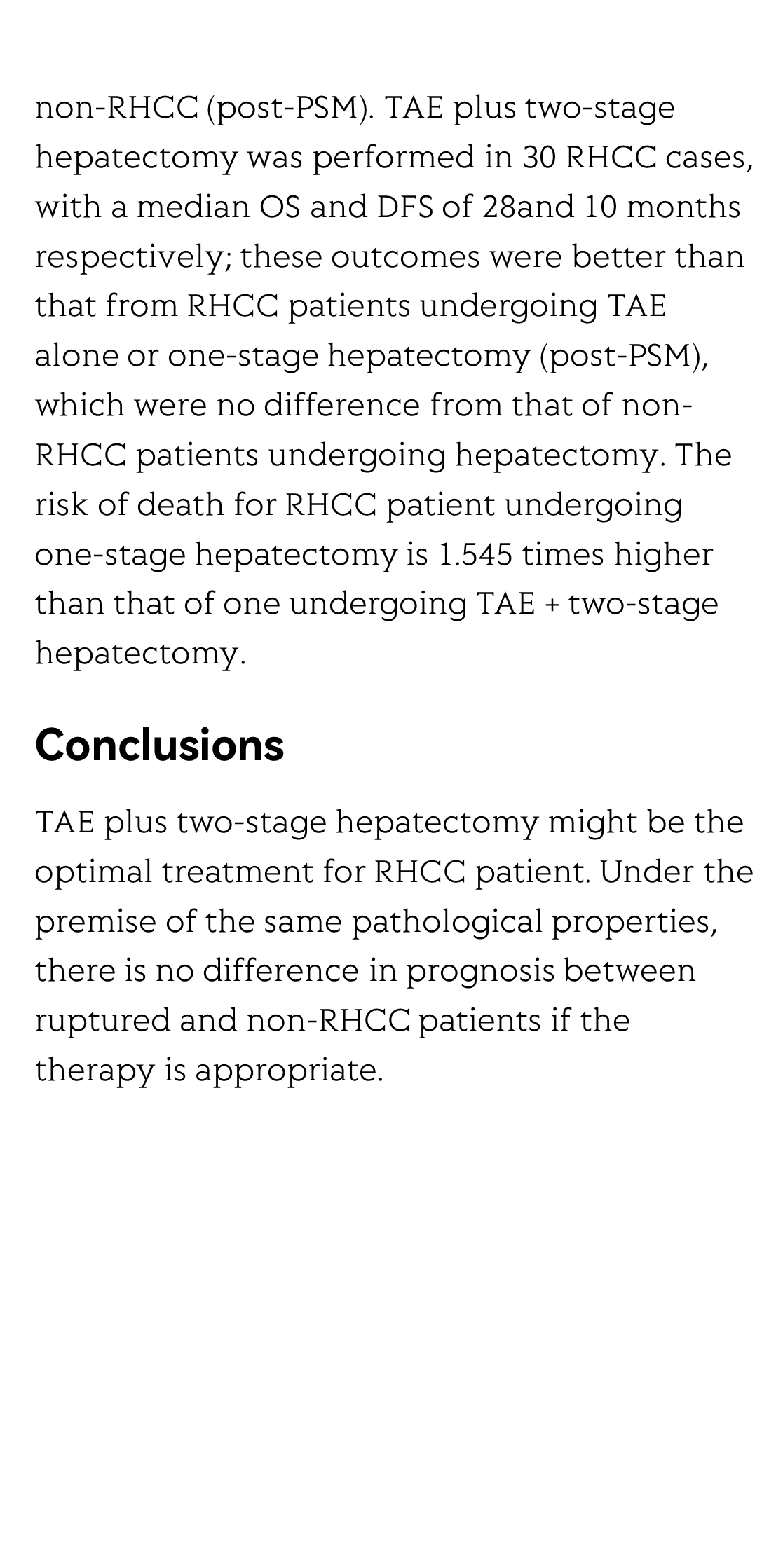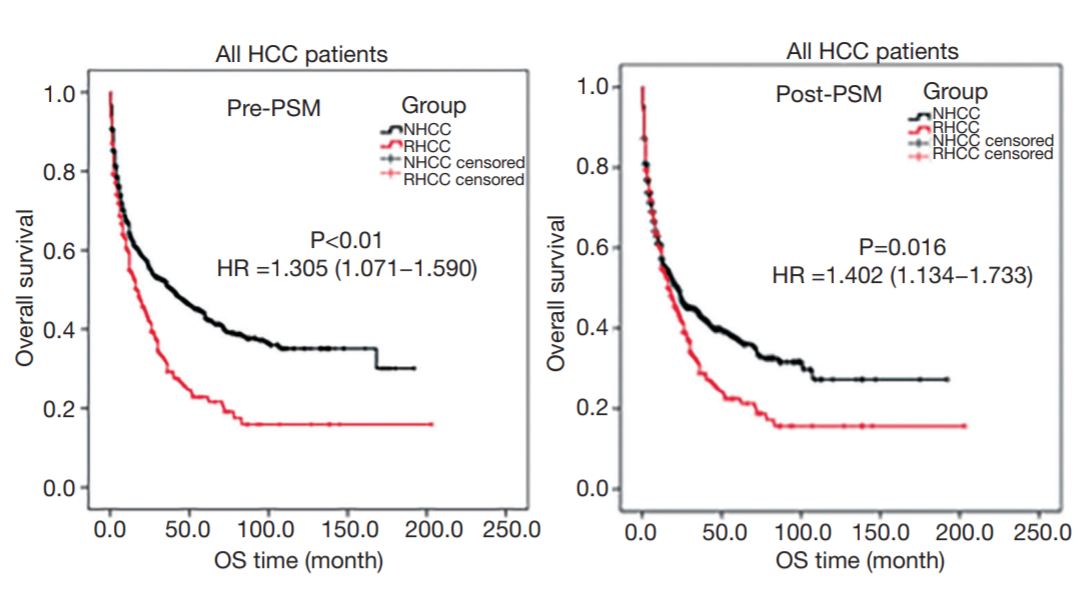(Peer-Reviewed) Propensity score matching study of 325 patients with spontaneous rupture of hepatocellular carcinoma
Wei Wang 王伟 ¹, Tao Meng ¹, Ying Chen ¹, Ye-Chuan Xu 许业传 ¹, Yi-Jun Zhao 赵义军 ¹, Yan Zhang ¹, Ming-Ya Yang ¹, Zhi-Hua Zhang 张志华 ², Fan Huang 黄帆 ¹, Hong-Chuan Zhao 赵红川 ¹, Xiao-Ping Geng 耿小平 ¹, Li-Xin Zhu 朱立新 ¹
¹ Department of General Surgery, the First Affiliated Hospital of Anhui Medical University, Hefei, China
中国 合肥 安徽医科大学第一附属医院普外科
² Department of Statistics, Anhui Medical University, Hefei, China
中国 合肥 安徽医科大学 流行病与卫生统计学系
Hepatobiliary Surgery and Nutrition, 2021-06-02
Background: This study aims to find out the possible optimal therapy and assess the prognosis properly for patient with spontaneous rupture of hepatocellular carcinoma (HCC).
Methods: Propensity score matching (PSM) analysis was used to study the data from 325 patients with ruptured HCC (RHCC) and 2,291 patients with non-RHCC.
Results: The incidence and hospital mortality of RHCC were 5.1% and 0.8% respectively, with a median overall survival (OS) time of 17 months. There was no difference between ruptured and non-RHCC patients undergoing conservation treatment in terms of OS. Trans-arterial embolization (TAE) was carried out in 69 (21.2%) cases with RHCC, with a median OS of 7 months, which was no difference from that of non-RHCC (pre- and post-PSM). One hundred and sixty-nine (52.0%) RHCC cases underwent one-stage hepatectomy, with a median OS and disease-free survival (DFS) of 30 and 6 months respectively, which were shorter than that of non-RHCC (post-PSM). TAE plus two-stage hepatectomy was performed in 30 RHCC cases, with a median OS and DFS of 28 and 10 months respectively; these outcomes were better than that from RHCC patients undergoing TAE alone or one-stage hepatectomy (post-PSM), which were no difference from that of non-RHCC patients undergoing hepatectomy. The risk of death for RHCC patient undergoing one-stage hepatectomy is 1.545 times higher than that of one undergoing TAE + two-stage hepatectomy.
Conclusions: TAE plus two-stage hepatectomy might be the optimal treatment for RHCC patient. Under the premise of the same pathological properties, there is no difference in prognosis between ruptured and non-RHCC patients if the therapy is appropriate.
Flicker minimization in power-saving displays enabled by measurement of difference in flexoelectric coefficients and displacement-current in positive dielectric anisotropy liquid crystals
Junho Jung, HaYoung Jung, GyuRi Choi, HanByeol Park, Sun-Mi Park, Ki-Sun Kwon, Heui-Seok Jin, Dong-Jin Lee, Hoon Jeong, JeongKi Park, Byeong Koo Kim, Seung Hee Lee, MinSu Kim
Opto-Electronic Advances
2025-09-25
Dual-frequency angular-multiplexed fringe projection profilometry with deep learning: breaking hardware limits for ultra-high-speed 3D imaging
Wenwu Chen, Yifan Liu, Shijie Feng, Wei Yin, Jiaming Qian, Yixuan Li, Hang Zhang, Maciej Trusiak, Malgorzata Kujawinska, Qian Chen, Chao Zuo
Opto-Electronic Advances
2025-09-25







